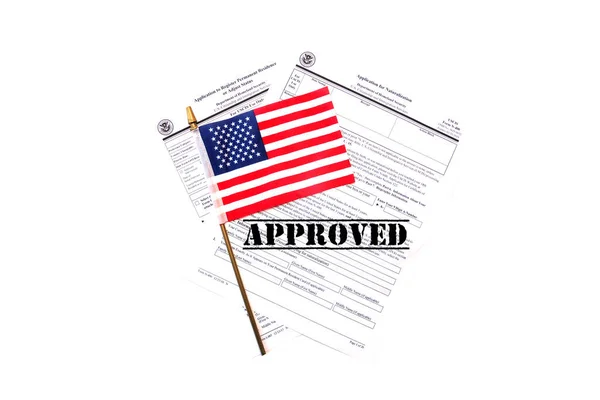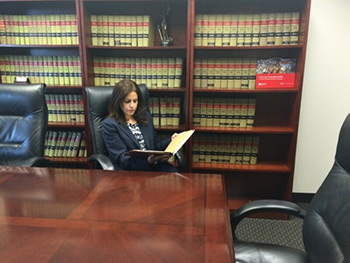
How Long Does It Take To Become A US Citizen?
Becoming a United States citizen is a life-changing goal for many people. The process involves several steps, each with its timeline. While some applicants move forward quickly, others face delays that extend the wait. Understanding how long it takes to become a US citizen can help set realistic expectations. The timeline depends on eligibility, preparation, application accuracy, and government processing times.
The Basic Eligibility Timeline
Most applicants for naturalization must first hold a green card for a set period before they can apply. For many, this period is five years. For those married to a U.S. citizen, the requirement is often three years. During this time, it is important to maintain continuous residence and meet physical presence requirements. Any extended travel outside the United States may delay eligibility. Meeting the time requirement is the first major step toward becoming a citizen, and starting the application too early can lead to rejection. This waiting period can also be used to strengthen one’s case by gathering documents, improving English language skills, and understanding the responsibilities of citizenship. The stronger the foundation at this stage, the smoother the later steps often become.
Preparing Your Application
Before filing, every detail of the N-400 naturalization application must be accurate. Mistakes or missing information can cause weeks or months of delay. Gathering documents like tax records, travel history, and proof of residence takes time. Some people prepare in a few weeks, while others need months to collect everything. A well-prepared application has a much better chance of moving through the system without extra review. This is also the stage where small decisions can save time later, such as double-checking dates, making sure translations are correct, and clarifying any inconsistencies. Applicants who organize their paperwork in advance often move through the review process faster and with fewer questions from USCIS.
USCIS Processing Times
Once the application is filed, the case is sent to U.S. Citizenship and Immigration Services for review. Current USCIS processing times for naturalization cases vary across the country, ranging from several months to more than a year. Processing centers in large metropolitan areas tend to have longer waits due to higher application volumes. Checking the posted processing times for your local office can give a general idea, but these numbers can change without notice. Applicants should also keep in mind that even when processing speeds are publicly listed, sudden changes in staffing or policy can create unexpected slowdowns. Being aware of average timelines is helpful, but building in some flexibility helps manage expectations and reduces stress during the waiting period.
The Biometrics Appointment
After receiving your application, USCIS schedules a biometrics appointment. This is when fingerprints, photographs, and signatures are collected for background checks. In many areas, the appointment happens within a few weeks of receiving the notice. Delays may occur if local offices are backlogged. While this step is usually quick, it is a required part of the process and must be completed before moving forward. Missing the appointment can cause significant setbacks, so attending on the scheduled date is important. This step also serves as an early confirmation that the case is actively moving forward in the system, which can be reassuring to applicants during the long overall process.
The Citizenship Interview and Test
The interview and test are key milestones. The interview includes questions about your background and application. The test covers U.S. history, government, and basic English reading, writing, and speaking skills. Wait times for interviews can range from a few months to more than half a year, depending on the workload at the local USCIS field office. Failing the test may require a second appointment, which will add more time to the process. Preparing well for the test not only reduces the chance of delays but also builds confidence for the interview itself. Studying regularly and reviewing sample questions can make this part of the process smoother and less stressful.
Oath Ceremony Scheduling
Once the interview and test are passed, USCIS will schedule the Oath of Allegiance ceremony. In some locations, this happens the same day as the interview. In others, it can take several weeks. You are not a U.S. citizen until this oath is taken. For many applicants, the ceremony is the final and most rewarding step. The scheduling speed can depend on the number of available seats, the frequency of ceremonies in your area, and administrative factors at the local office. Taking the oath marks the official completion of the journey, and it is often a proud, emotional moment that makes the long wait worthwhile.
Factors That May Delay the Process
Delays can happen for many reasons. Background checks may take longer if there are multiple records to review. Missing documents or unclear answers in the application can trigger a request for more evidence, which stops progress until the information is received. Large volumes of applications in certain regions can also slow things down. Even something as simple as a missed appointment can cause months of delay. Understanding these risks early can help applicants prepare and respond more quickly. Those who maintain good records, attend every scheduled step, and communicate promptly with USCIS generally experience fewer setbacks.
Total Estimated Timeline
From the time you become eligible to the day you take the oath, the process can take anywhere from six months to several years. For many applicants, a realistic estimate is around 18 months from applying for citizenship. Those who prepare well and respond quickly to requests tend to have shorter wait times. Every case is unique, and patience is often part of the journey. Timelines can also shift based on policy changes, staffing levels, and regional demand. Staying informed and tracking your case status helps keep expectations realistic.
What Factors Can Speed Up the Naturalization Process?
While the path to citizenship often follows a standard timeline, certain circumstances may help move things along faster. For example, completing all forms accurately and submitting required documents upfront can reduce back-and-forth with immigration officials. Some applicants may also qualify for expedited processing due to military service or special provisions under immigration law. Staying informed about application status through USCIS online tools and responding quickly to requests for additional information can also help avoid unnecessary delays.
How Life Circumstances Can Affect Your Timeline
While the citizenship process generally follows a standard timeline, personal circumstances can create delays or speed things up. For example, frequent travel outside the U.S. during the residency period might require additional documentation to prove continuous presence. Military service can significantly shorten the path to citizenship under certain conditions. Conversely, missing scheduled appointments, providing incomplete forms, or undergoing security-related background checks can extend the process. Understanding how your unique situation fits into the broader requirements helps set realistic expectations for your journey to U.S. citizenship.
Working With an Immigration Lawyer
An experienced immigration lawyer can help reduce delays by making sure the application is complete and accurate the first time it is submitted. Our team at LaFontaine & Law Associates works closely with you to meet eligibility requirements, prepare a strong application, and respond quickly to government requests. Our attention to detail and knowledge of the process can make a difference in the outcome of your application. Legal guidance at each stage from our experienced team can also help avoid common mistakes that often lead to months of unnecessary delay.
The process of becoming a U.S. citizen takes time, planning, and attention to detail. While no one can control every delay, being prepared at each step can make the journey smoother. From eligibility to the oath ceremony, understanding the process helps set realistic expectations and avoid surprises.
To discuss your own case, contact us to schedule a consultation.
